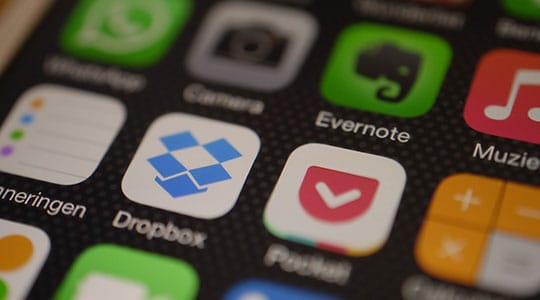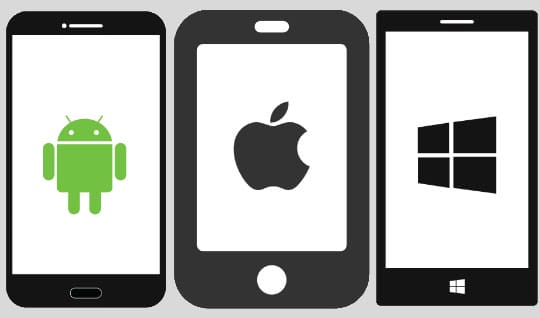While the majority of the mistakes that developers make when designing applications are very specific, there are some general one that can happen even to the best of them, especially if they spend too much time on a particular project, and if they are not able to look at a bigger picture. It can be anything from having an app that’s solving the wrong problem, or it is missing some of the features, to designing an app that is brilliant but not very user-friendly. In order to help you avoid these mistakes and design great apps, we have come up with a list of the 12 most common app design mistakes.
1. Having to Register before Using the App
 Before asking the users to register, you need to provide them with an opportunity to test out your app first. Once they have had a chance to experience it and its value, it won’t take much for them to register. They will want it, but you have to let them check it out first.
Before asking the users to register, you need to provide them with an opportunity to test out your app first. Once they have had a chance to experience it and its value, it won’t take much for them to register. They will want it, but you have to let them check it out first.
2. Too Many Elements on One Screen
 Regardless of how many functionalities your app might have, you can’t lump them all on one screen, because users will easily become overwhelmed by it. Instead, try and divide them up between different screens. As they swipe and scroll through the app, they will come across new bits of information that they need.
Regardless of how many functionalities your app might have, you can’t lump them all on one screen, because users will easily become overwhelmed by it. Instead, try and divide them up between different screens. As they swipe and scroll through the app, they will come across new bits of information that they need.
3. Using Nonstandard Icons, Buttons, and Actions
 We get it, your app is totally unique, but it doesn’t have to be original everywhere, especially when it comes to stuff like social media buttons and actions which most users are already accustomed to. Sometimes, you don’t need to reinvent the wheel. Just use the same stuff as everyone else.
We get it, your app is totally unique, but it doesn’t have to be original everywhere, especially when it comes to stuff like social media buttons and actions which most users are already accustomed to. Sometimes, you don’t need to reinvent the wheel. Just use the same stuff as everyone else.

4. Failing to Consider User Experience
 This happened when developers attempted to just replicate the same user experience from the website inside the app, which was a huge blunder because mobile users experience their content in a different way. It is important to think of how users will use the app on a different platform.
This happened when developers attempted to just replicate the same user experience from the website inside the app, which was a huge blunder because mobile users experience their content in a different way. It is important to think of how users will use the app on a different platform.
5. Design Elements Are Too Tiny
 There are no general guidelines as to how large your buttons should be, but you should at least make sure that the space around them where the user will tap is big enough so that they don’t tap another button by mistake. It’s an infuriating design flaw, so make sure to design the app with large enough buttons.
There are no general guidelines as to how large your buttons should be, but you should at least make sure that the space around them where the user will tap is big enough so that they don’t tap another button by mistake. It’s an infuriating design flaw, so make sure to design the app with large enough buttons.
6. Failing to Provide Actionable Cues
 Every good app should be able to guide the user through its interface by offering enough visual cues and elements that will let them know what to do next, and that includes the use of appropriate colors, spaces, and fonts.
Every good app should be able to guide the user through its interface by offering enough visual cues and elements that will let them know what to do next, and that includes the use of appropriate colors, spaces, and fonts.
7. Failing to Be Consistent
 If you have elements and features that are repeating themselves throughout the app, make sure that they act in exactly the same way as they did the first time the user came across them. Once they learn how it works, they will expect it to work in the same manner every single time.
If you have elements and features that are repeating themselves throughout the app, make sure that they act in exactly the same way as they did the first time the user came across them. Once they learn how it works, they will expect it to work in the same manner every single time.

8. Lack of Feedback
 Allowing a response opportunity is necessary, not only because it provides the users with a sense that they are able to control the app and interact with it successfully, but also because it represents a precious source of information for you. You can figure out how the users act and use the app, and in turn, make it better for them.
Allowing a response opportunity is necessary, not only because it provides the users with a sense that they are able to control the app and interact with it successfully, but also because it represents a precious source of information for you. You can figure out how the users act and use the app, and in turn, make it better for them.
9. Going Overboard with Your Animations
 Having some animation is always a welcome thing, but if you overdo it, you will cause your application to become slow and less responsive. Instead, if you really must have them everywhere, try and make them short, fast, and attractive.
Having some animation is always a welcome thing, but if you overdo it, you will cause your application to become slow and less responsive. Instead, if you really must have them everywhere, try and make them short, fast, and attractive.
10. Beta Testing the App Yourself
 Instead of doing it yourself, try and have a select group of people checks your app for user experience and usability. It won’t cost you a lot, especially if you manage to find a targeted group of users willing to test it out.
Instead of doing it yourself, try and have a select group of people checks your app for user experience and usability. It won’t cost you a lot, especially if you manage to find a targeted group of users willing to test it out.
11. Creating a Bad First Impression
 Users might not like your app if they don’t like your home page, or if they dislike the way it performs. This means you should always design it in such a way that it is able to load quickly, and that it’s easy to understand and use.
Users might not like your app if they don’t like your home page, or if they dislike the way it performs. This means you should always design it in such a way that it is able to load quickly, and that it’s easy to understand and use.

12. Asking the User to Provide the Same Info Twice
 We can all agree that this is extremely annoying. Fortunately, this sort of thing is easily avoidable, and all it takes is a bit of effort on your part so that the information gets transferred from one part of the app to another.
We can all agree that this is extremely annoying. Fortunately, this sort of thing is easily avoidable, and all it takes is a bit of effort on your part so that the information gets transferred from one part of the app to another.
Conclusion
 Design mistakes can happen to even the most experienced app develops, and it’s ok. But, it’s also important to learn from them, and not repeat them, if possible. We invite you to share with us some of the app design mistakes you have come across or made yourselves. Let us know!
Design mistakes can happen to even the most experienced app develops, and it’s ok. But, it’s also important to learn from them, and not repeat them, if possible. We invite you to share with us some of the app design mistakes you have come across or made yourselves. Let us know!
This article is written by Rachel Bartee. She is a content writer and a marketing consultant at EduGeeksClub who likes to be aware of new trends in marketing and get involved in writing about things which are currently on her mind. She is content-oriented and knows how to put words into action. She feels passionate about traveling and inspired by her morning yoga. Reach her at Twitter.





